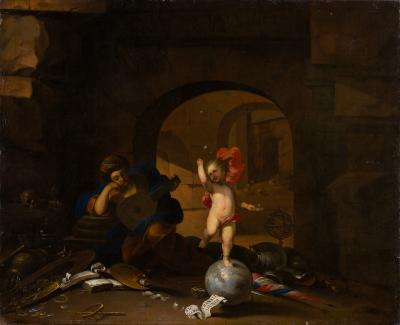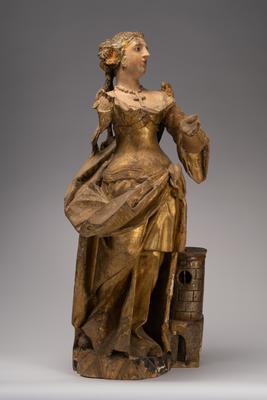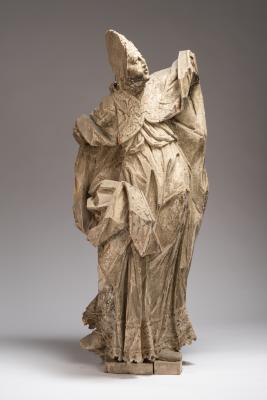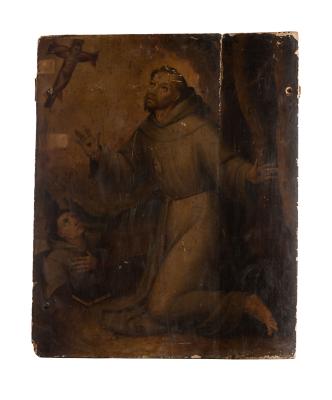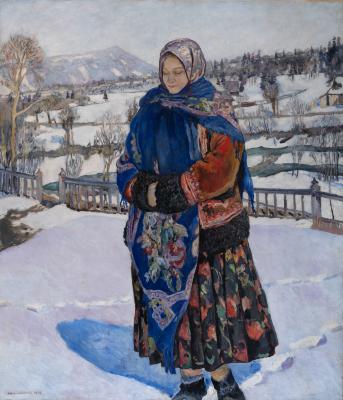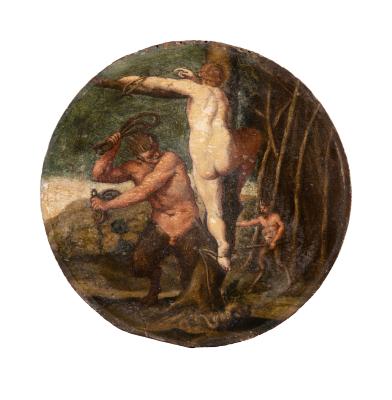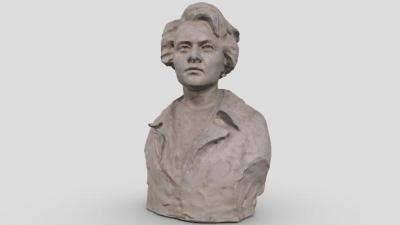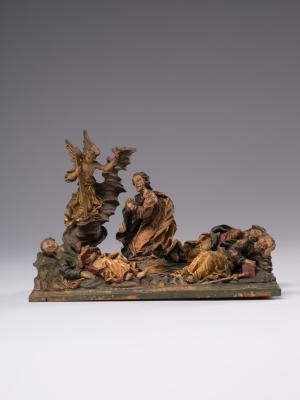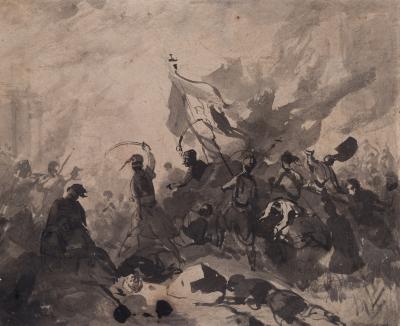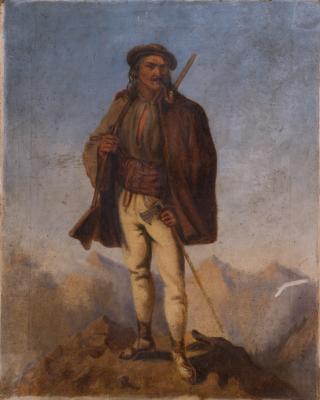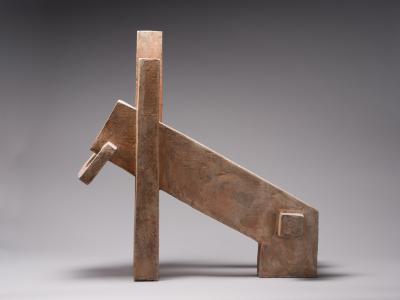Table (from the 8th of March Greetings Series)
Alexander Aksinin
- ID
- Г-IV-4087
- Author
- Alexander Aksinin
- Name
- Table (from the 8th of March Greetings Series)
- Date of creation
- 1977
- Technique
- etching
- Material
- imprint on paper
- Dimensions (height x width, cm)
- 8.5 x 11.1
- Type
- printmaking
- Provenance
- Courtesy of V. Onusaitis, 1987
This is one of the original works dedicated to Women's Day, March 8th. The relative title of the work is "Table". The author created the etching while working on the "Alice in Wonderland" graphic series. The composition's visual range repeats the combination of dominant vertical and horizontal stripes, typical of works of this series. At the same time, the strict geometric structure, that is, the table, is immersed in its opposition, the amorphous organic mass. The author creates an exquisite greeting card joke by using the male-female dichotomy as a metaphor.
In the centre of the composition, one can see a four-legged lapidary table with an extended drawer. It is covered with burdocks that disperse with crumbs in the upper part of the etching. The crumbs are reminiscent of a swarm of insects. The entire lower horizontal of the work is filled with the same prickly hillocks. However, upon closer inspection, some burdocks resemble hedgehogs. One in the drawer has an elongated muzzle, the other three with full-face muzzles are at the bottom right, and another looks out from the "herbarium" surrounding the table.
The author has almost hidden minor miniature marks over a stripe of a hillock. The letter A is located near the pairs of sticks to the left of the table. The author's monogram in the arch – the letter A – is in the lower right corner; below it is written 1977.





